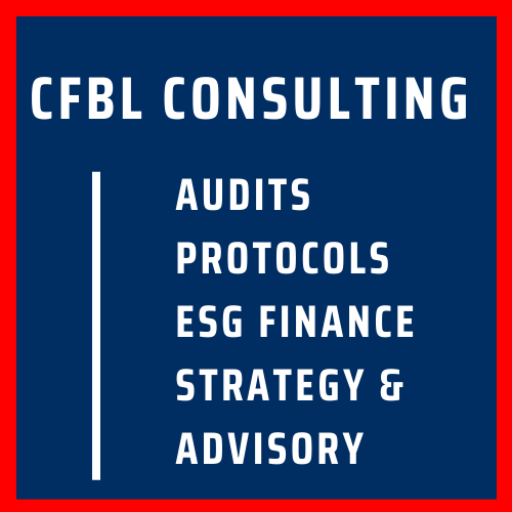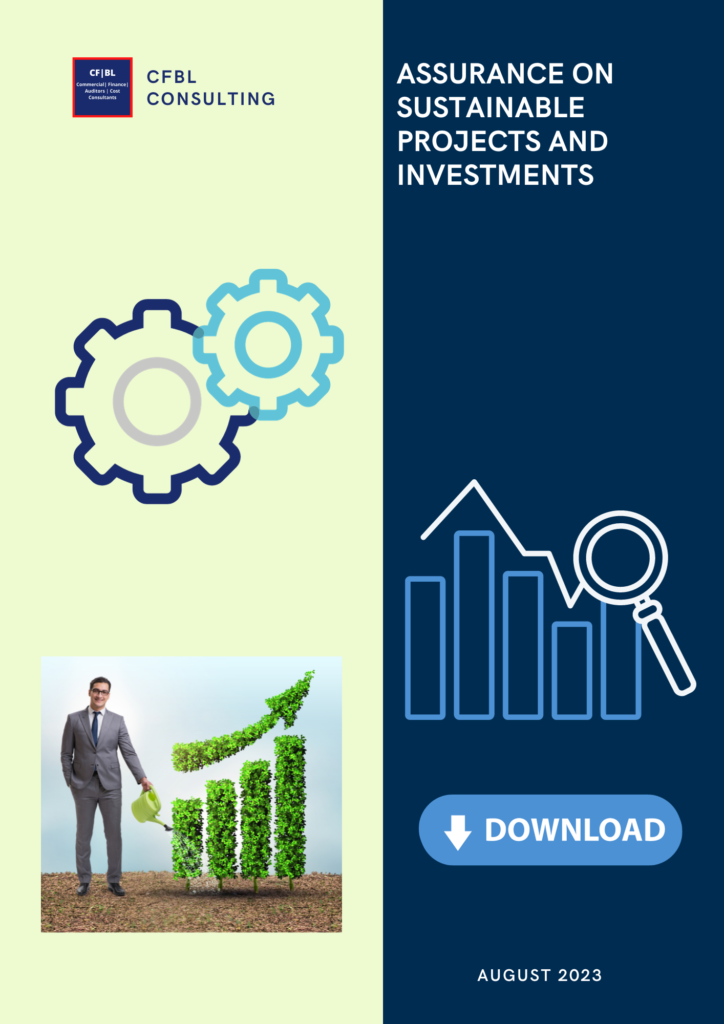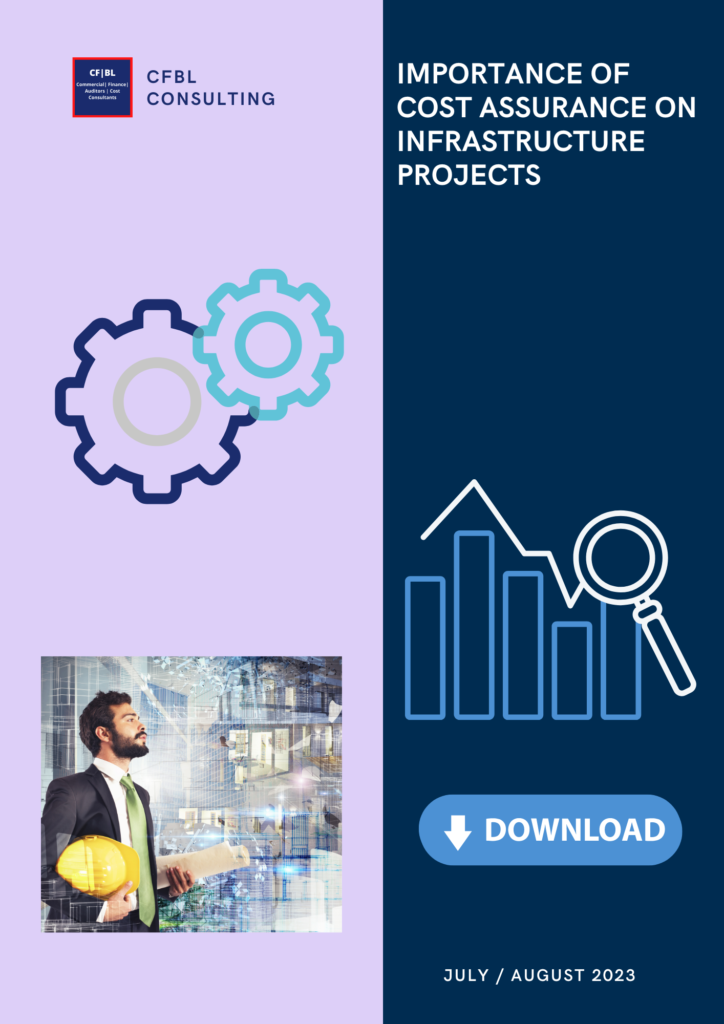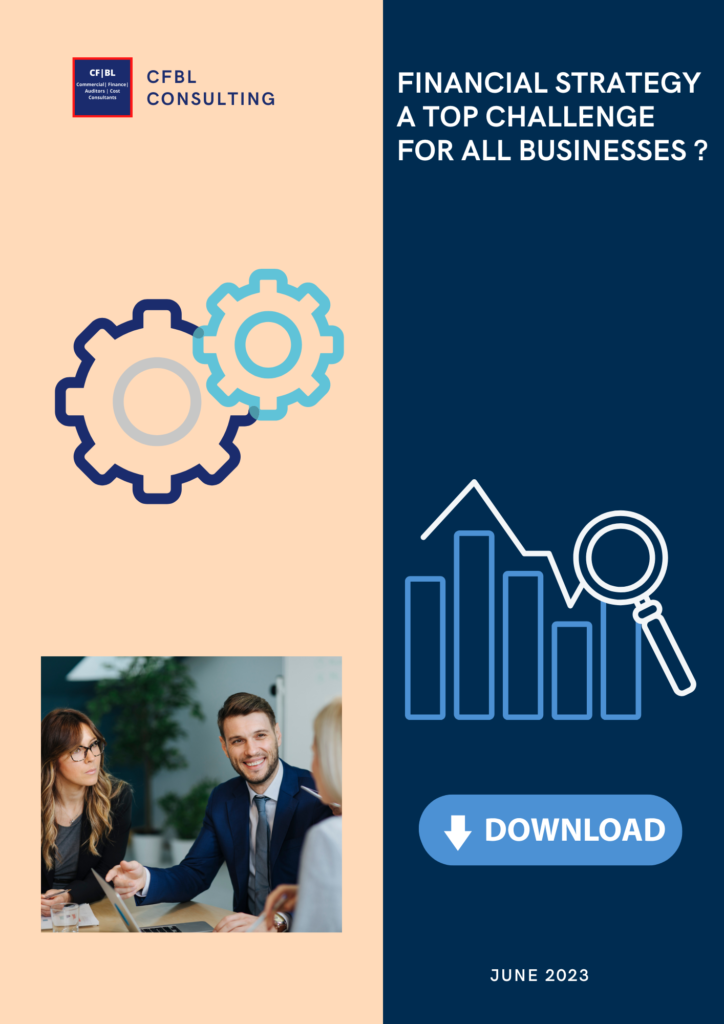“The infrastructure sector sits at a collision point of global disruptions, including shifts in capital availability, evolving social and environmental priorities, and rapid urbanisation. However, the emergence of COVID-19 introduces an altogether new set of challenges. The full impact of the pandemic will take years to play out”
Challenges facing Infrastructure projects
Developing infrastructure that is sustainable, resilient, and inclusive is a complex endeavour and it is even more so in emerging markets. Here are five of the biggest challenges faced by investors in emerging markets:

The UK’s growth plan suggests reducing government red tape to enhance critical Infrastructure to support employment, investment, and house ownership.
Weak financial oversight
- Successful infrastructure development requires inclusive planning, disciplined oversight, transparency, rigorous review, and tight control of budgets. Weak public investment management can lead to a lack of strategic guidance, appraisal processes, independent reviews, cost and scheduling controls, and post-project assessments. Such conditions put funding at risk and turn away potential investors.
Inconsistent power supply
- Large gaps in global access to electricity, water, and transportation infrastructure indicate that such gaps constrain economic activity.
Weak framework for PPPs
- Public-private partnerships (PPPs) work best in a strong regulatory environment, which some emerging markets may lack. In addition, a weak regulatory climate may bring adverse effects for the private sector in the event of a default that can trigger an immediate freeze of project assets as opposed to debt coverage negotiation.
Confusing regulatory environment
- Communication gaps may exist regarding a project’s environmental and regulatory requirements. Having to backtrack and fulfil regulations that were not mentioned from pre-bid inception onwards can add substantial delays and costs.
Human and physical resource constraints
- Labour supply, labour quality and labour laws are critical to a project’s success. Although emerging markets may appear to have a surfeit of labour supply, educated construction labour may be hard to find and keep. Fully funded, viable infrastructure projects have stalled indefinitely due to a lack of both construction and management expertise.

Global complexities impacting the future of infrastructure
“Supply chain vulnerabilities were named by 44 percent of respondents and 53 percent of respondents, respectively, as inadequate planning for both short-term and long-term disruptions. Further, over 40 percent of respondents listed geographic or regional concentrations as well as single-point dependencies.”
Operational resilience:
- The COVID-19 outbreak has brought operational resilience into focus, particularly by exposing the weakness of supply chains. Western companies have had to identify secondary suppliers quickly, preferably local ones due to logistics options being closed off as well.
Technology adoption:
- Infrastructure has a relatively low rate of investment in advanced technologies compared with other capital-intensive industries. In the current environment, pressure from reductions in capacity and rising costs may encourage asset owners and project managers to increase the adoption of technologies such as artificial intelligence and robotics.
Sustainability:
- Pandemics and climate change are both global problems, and responding to the former can create continuity for the latter. Despite COVID-19’s severe tests, the infrastructure industry remains as essential as ever and will respond based on underlying demand. Leadership teams can position themselves to capitalize on the rebound by understanding how the pandemic has transformed industry dynamics.
Affordability/Costs:
- The industry already faces a notable lack of infrastructure spending globally, especially in developing economies. Undoubtedly, the measures taken to shore up economies will have an impact on infrastructure investment, as spending earmarked for construction may now be channelled into social initiatives such as unemployment benefits and healthcare.
The COVID-19 outbreak has been declared a public health emergency of international concern by the World Health Organization. As the international response continues to develop, we know that infrastructure project owners and contractors are beginning to face potentially significant challenges which they need to contend with rapidly.
Investment in sustainable infrastructure projects
- Investment in sustainable infrastructure plays an important role in economic growth. It makes an essential contribution to a more inclusive economic, social and environmental condition. Enhancing quality infrastructure will require investment strategies and a whole-of-government policy approach to ensure infrastructure reaches its economic, environmental, social and development objectives.
- When the federal government appropriates money for infrastructure spending, two effects limit how quickly and how effectively federal aid becomes productive public infrastructure: (1) state-and-local government infrastructure spending offsets and (2) the time needed to complete the infrastructure investment.
6 Strategies for Infrastructure investment to ensure sustainability:
Economic efficiency:
- Raising economic efficiency in view of life-cycle. It considers the total costs and benefits of the investment, as well as associated risks, over the lifetime of infrastructure assets.
Sustainable growth:
- Maximising the positive impact of infrastructure to achieve growth and development
Resilience:
- Building resilience against natural disasters and other risks.
Environment:
- Integrating environmental considerations into infrastructure, including climate. The environmental impact of infrastructure projects should be taken into account at all stages of development. This means conducting thorough environmental analyses to identify ways to mitigate the negative impacts of infrastructure on ecosystems, biodiversity, and climate change.
Social:
- Integrating social consideration in infrastructure investment. For example access to infrastructure services for all groups, allowing everyone to participate economically and socially in a respectful, safe, and healthy environment. Resilience against natural disasters, which can be exacerbated by climate change, as well as human-made risks such as cyber-attacks, have increased significantly in recent years.
Governance:
- Strengthening infrastructure governance. Governments must have the resources and capacity to oversee infrastructure projects properly. This often requires improvements to institutions and regulations.

Effects of Ukraine crisis on infrastructure projects
- Russia’s invasion of Ukraine has caused disruption in construction-related markets, already strained by a two-year pandemic and rising inflation on a global scale. To mitigate the effects of the Ukraine crisis it is crucial to have a financial and sustainable strategy to help drive economic growth, for building a more resilient and greener society.
- Short-term responses will be affected as well as the long-term sustainability agenda. It is important to create a communications plan to keep investors and collaborators up to date, should your business’s ESG commitments change as the situation evolves.
- High energy prices and security concerns could lead to a short-term slowdown in decarbonization, including in fossil fuels phase-out. On the other hand, they could encourage policymakers to hasten the transition to cleaner energy sources like renewables.
- The current shock has drawn comparisons with the stagflationary shocks of the 1970s. However, the impact of oil price surges has become less severe over time and consensus estimates don’t see inflation reaching double-digit levels in the next year in the United Kingdom, France and Germany

(Figure 1) : Energy price shocks and inflation in Europe
The conflict in Ukraine is also likely to drag global gross domestic product (GDP) growth
- The Organisation for Economic Co-operation and Development estimates global economic growth to be more than one percentage point lower than projected before the conflict and will have an effect on infrastructure projects due to supply chain disruptions.
- The Russian invasion of Ukraine has continued to cause global supply chain disruptions. As a result, the prices of essential commodities such as fuel and food have increased globally. For instance, both Russia and Ukraine account for almost one-third of global wheat exports. The war has caused shortages that have increased food insecurity due to soaring food prices. Most affected are poor countries that are already grappling with other issues such as climate change.
“Russia is an energy powerhouse that ranks as the world’s third largest oil producer and top gas exporter. Oil and gas prices have skyrocketed due to concerns about Russian supply. While they’ve dipped since their peak in March 2022, they’re still high compared to historical levels.”

How can technology minimize risks in infrastructure projects
Basic risk visualization programs
- The first basic thing that Information technology influenced the risk management domain is the foundation of less complex and less expensive applications like office automation tools, such as Microsoft Excel, PowerPoint, and SharePoint, which are used extensively in large, medium, and smaller organizations for risk tracking and reporting purposes.
Social Media
- Some businesses now actively monitor social media content to collect timely insights on customer service, product quality, or service delivery issues. In this case, widely and immediately available social media content provides valuable insights into the public’s perceptions of the business’s products and services, which helps the business avoid reputational damage by providing management tools that can quickly address service and product quality issues before they cause serious brand or franchise damage.
Data Integration and Analytics
- Many organizations already have large and extensive databases currently in production, and many IT departments are actively engaged in integrating these better with existing applications to extract more value from IT investments. Many databases contain risk data points that can also be extracted, “mined,” or ingested by more powerful computing platforms to deliver even more organizational value over time.
Big Data analytics can help in many areas concerning Market risk analysis:
- Fraud Management: fast fraud identification, reduces damage to a minimum
- Credit management: better predictive capacity and new sources of data allow predicting user behaviours
- Money laundering: identify issues faster, real-time reaction
- Market and commercial loans: Allow better simulations and predictions of markets and companies
- Operational risk: Offers more control and knowledge over client interaction, and improves safety.
- Integrated risk management: Offers a global vision in different sectors and areas where financial risk appears
“The evolution of the information technology has influenced every domain in our life, such as learning, marketing, business, entertainment, and politics. Risk management is one of the domain that is highly influenced by this evolution because it is mainly based on data.”

Five key steps to mitigate the impact of COVID-19
Review your digital transformation strategy:
- Run your digital capabilities at full throttle to secure the well-being of your people, optimise operations, ensure security and continue to build trust. This crisis will test your digital transformation strategy.
Be open to collaborations with government agencies in managing crisis:
- Compliance with all government directives for the well-being of society is a must. Tough times like this are drivers of change and we must work together to create value for the society and economy at large. Let’s do our part in creating public bodies of the future that are adaptive to circumstances and ready to deliver their defined purpose in the face of a world that is constantly changing.
Ensure agile, aligned and effective communication as well as stakeholder management:
- Clear and concise communication is crucial as you anticipate and react to external events or crisis situations which may affect your business. Given the uncertainty about the real impact of the outbreak, organisations need to give confidence to their people and external stakeholders as they bolster their preparation and response measures.
Refresh business continuity & crisis management plans
- The COVID-19 pandemic has put existing crisis management and business continuity plans under pressure. Having a deep understanding of the situation will allow you to effectively plan for, and respond to, the impact it has on your local and international market operations, supply chains, cash flow and workforce continuity. Ensure that you document the decisions made and actions implemented to allow for later assessment of best practices and assist with possible future legal actions.
Optimise people and organisation management
- Review plans to keep your people and your working environment safe. Revisit your travel rules, HR policies, and first aid plans and create safe ways to exercise the arrangements. Remember to also ramp up the working environment with up-to-date hygiene advice, and visitor policies and consider partial/total building closure protocols if social distancing is required.
“As the international response towards the COVID-19 pandemic continues to develop, we know that capital projects, infrastructure owners and stakeholders are faced with potentially significant challenges to which they need to respond rapidly”

Main types of project risks to focus on
Cost Risk:
- On infrastructure projects, costs will be incurred to procure needed products, services, and resources to successfully deliver projects. This is the most typical sort of risk that results from inadequate or inaccurate planning and cost estimation. When this circumstance develops, project managers frequently end up spending more money on the project than they have. This has a significant impact on the business, causing the project to be abandoned and resources to be wasted.
Performance Risk:
- This risk involves a project that will not generate the results and benefits indicated in the project requirements, which means you will have wasted time and money on a project that will eventually fail to deliver
Market Risk:
- This includes the risks provided by the competition, commodities markets, interest rates, foreign currency, liquidity, and credit concerns. However, even though it appears to be unpredictable and difficult to prepare, most project managers can protect themselves against it.
Governance Risk:
- This risk is linked to the board’s and management’s performance in terms of community, ethics, and corporate reputation. The risk is mostly determined by the actions of corporate executives.
Schedule Risk:
- This risk comprises project tasks and activities taking longer to finish than expected owing to poor planning, resulting in the loss of whatever competitive edge you may have had at the outset.
Operational Risk:
- This project risk is included in the performance risk because the predicted outcome of the project does not occur at all or in the manner that project managers had intended.
Managing costs of supply chain risk on infrastructure projects
The Pandemic caused many businesses to evaluate emerging risks in their sourcing and planning. Complexity and the global nature of the construction industry’s supply chains and workforce affect the cost and schedule of infrastructure projects.
3 useful steps:
- Change your mindset to a risk management mindset by pointing out supply chain vulnerabilities and increased fixes.
- Use demand profiling to prepare your supply chain for market variability.
- Use flexible contracting to enable greater collaboration.
6 supply chain resilience practices:
- Require forecasting and resiliency planning. From a management accounting perspective, this includes carrying out a cost/benefit analysis of potential risk mitigation strategies.
- You should have access to all data. From a management accounting perspective, a company needs quick access to information about suppliers, sites, parts, and products at risk, as well as alleviation processes.
- Work with supply chain partners to deliver customer value. Use open-book accounting to facilitate collaborative contracting and transparency across the supply chain.
- Utilise inventory and production capacity to enable the material flow. Provide information that evaluates meeting customer demand whilst at the same time managing trade-offs between cost, quality, and time.
- Establish multiple sourcing options. Have a diverse supply base to not be dependent on one factory, one supplier, or one region.
- The utilisation of new technologies. Through this facilities can be quickly altered to increase inputs and be more flexible to meet different demands.
“Emerging cost risks on infrastructure projects need to be actively managed and identified. Research has proved that investment in transportation infrastructure reduces direct transportation costs by 10% and will result in an improved supply chain that will help businesses reduce their operating costs by 1%.”

(See figure 3) Overcoming these concentration risks and single-point dependencies may become a central component of contingency planning, which has gained popularity due to the pandemic.
Phases to mitigate risks to infrastructure projects
Five phases to mitigate negative results:
Recognize critical suppliers:
- It’s important to have visibility over the project’s third-party supply chain and access to that party’s data to properly assess the chance of supply delays. Focusing on the most critical materials, equipment, products and tier 1 suppliers should help you prioritise and expose key vulnerabilities. Once those manageable factors are identified, you must dictate how reliant they are on the influence of the region.
Communicate:
- Disruption brings the risk of reputational damage. A clear strategy for transparent communication with all stakeholders, including employees and every party along the supply chain, will be critical.
Create a contingency plan:
- Review project controls, risk management and governance processes to make sure they are robust enough to provide early warnings of any cost, time or contractual issues arising from the possible scenarios.
“44 per cent and 53 per cent of respondents cited inadequate planning for both near and long-term disruptions as the top vulnerability in their supply chains, respectively. In addition, over 40 per cent of respondents listed geographic or regional concentrations as well as bottlenecks and single-point dependencies as core vulnerabilities”

Frequently Asked Questions (FAQs)
Questions are often asked about project risks for example “The impact complexity has on project planning and control. It can impede the clear identification of goals and objectives, as well as the selection of an appropriate project organization form, and it can even have an impact on project outcomes.”
What are the Project life cycle phases in the construction sector?
The lifecycle of a project in infrastructure has many phases including Planning, development, construction, commissioning, operation, and decommissioning.
What is Project Risk?
Project risk refers to the likelihood that an event may occur that will change the result of a project, for better or for worse.
What Is Project Risk Management?
Project risk management is the process of identifying, evaluating, and responding to each and every risk that can arise during the duration of the project and its whole life span so as to keep the project on course and on target.
What are the Project life cycle phases in the construction sector?
The lifecycle of a project in infrastructure has many phases including Planning, development, construction, commissioning, operation, and decommissioning.
The main phases of design include.
What are the 5 main common projects Risks?
Financial Risk, Competence Risk, Functional Risk
Marketing and market analysis Risk
Schedule planning Risk
How do you analyze risk in your project?
You can evaluate how the risk will affect your schedule and budget by doing qualitative and quantitative risk analysis.
What are the challenges of project complexity and project management?
Miscommunication is also dangerous to project teams since it impairs collaboration. It can lead to disagreements among team members.
How to Identify Project Risks?
The best way to identify project risks is to implement risk management into your everyday processes. Encourage project managers and their teams to adopt practices to mitigate risk factors. They should also look ahead to recognize and anticipate new possibilities.
What Are Positive Risks in Project Management?
Not all risks are negative. Positive risks are the potential for a circumstance to alter the outcome of a project in a positive way. This type of risk can include policy and technology changes, favourable environmental conditions, positive customer response, and more.
What Is Residual Risk in Project Management?
Residual risk is the remaining level of risk that is still present after taking steps to reduce the chances of risk events occurring.
Which factors determine the complexity of a project?
The number of subsystems and systems that comprise the project, the various methodological and intellectual assumptions held in common by these processes, the cross-organizational and schedule interrelations between activities, the updating and redeveloping works, and the program’s sheer size and entanglement
How CFBL consulting can help?
- Undertaking pre-audit diagnostic and current state risk assessment
- Perform Independent actual carbon cost audits to prevent greenwashing
- Engaging with key stakeholders, board, and leadership for buy-in
- Communicating with stakeholders and the supply chain early on
- Establishing protocols for your net zero strategy
- Implementing protocols through workshops and training
- Benchmarking your carbon footprint for carbon reduction and offset
- Developing the investment business cases, for decarbonisation
- Establishing a sustainable, ESG, and Net Zero strategy
- Independently reporting actual impact against goals
- Account, tax, and compliance reporting for ESG and carbon cost
References
- https://www.accenture.com/us-en/insights/consulting/ukraine-areas-focus-finance-risk-leaders
- https://towardsdatascience.com/how-information-technologies-influenced-risk-management-7eb3a38d253
- https://www.teamwork.com/project-management-guide/project-risk/
- https://www.projectmanager.com/blog/risk-management-process-steps
- https://www.simplilearn.com/common-project-risks-article
- https://www.projectmanager.com/blog/risk-management-process-steps
- https://www.hindawi.com/journals/complexity/2018/4891286/
- https://www.copperproject.com/2018/06/project-management-101-profile-project-complexity/#:~:text=According%20to%20project%20management%20experts,%2C%20temporal%2C%20and%20directional%20complexity.
- https://www.pwc.com/gx/en/industries/capital-projects-infrastructure/publications/infrastructure-covid-19.html
- https://www.webuildvalue.com/en/global-economy-sustainability/war-ukraine-construction-industry.html
- https://www.atlanticcouncil.org/blogs/geotech-cues/supply-chains-and-the-effects-of-covid-19-geopolitics-and-technological-innovation/
- https://www.pwc.com/gx/en/industries/capital-projects-infrastructure/publications/infrastructure-trends.html
- https://www.pwc.com/sg/en/publications/a-resilient-tomorrow-covid-19-response-and-transformation/covid-proofing-infrastructure-projects.html
- https://www.gsam.com/content/gsam/global/en/market-insights/gsam-insights/perspectives/2022/infrastructure-in-inflation_the-coming-dispersion.html
- https://www.builderspace.com/benefits-of-supply-chain-management-in-construction
- https://www.fm-magazine.com/issues/2021/sep/mange-costs-of-supply-chain-risks.html
What does CFBL Consulting do?
CFBL consulting offers cost-assurance audits and sustainable strategy consulting services. This includes an initial ESG assessment, an X-ray view of actual costs to prevent or evidence greenwashing, impact reporting, a payroll audit to safeguard equal pay, and practical training on how to embed ESG KPIs into finance, commercial, and project investment decisions. We identify, resolve, and follow through. By establishing ourselves as strategic partners, we govern and help implement sustainable strategies. Our roadmaps ensure that project plans are successful, as a result, we measure our success by yours.
Who We Work With and What We Do
- Infrastructure project: cost assurance audits, systems payroll HR audits & protocols
- SME Business Strategy: 5-Yr strategic business plans and financial statements
- Fintech/Transformation advisory: minimising risk and optimising business case ROI
- Sustainability & ESG: pay-gap carbon cost audits reporting ESG finance training
- Training: delivering case-based training for buy-in to technology & staff upskilling
- Fintech & Digital: strategy cost optimisation & digital transformation advisory
- Steering Group (CSR): cost assurance and audits on infrastructure projects/contracts
Sustainability & ESG Strategy Tips – How can CFBL Consulting help
- Developing and implementing a sustainable business strategy for growth/scaling
- Sustainability/ESG strategy: implementing, carbon measurement and benchmarking
- HR/Payroll audit: Independent HR, payroll cost, pay-gap gender balance auditing
- Sustainability & ESG: strategy implementation, carbon cost auditing/impact reporting
- ESG Finance training: upskilling staff/supply chain on ESG KPIs in decision making
- ESG protocols: training & designing controls, tools, and templates for ESG reporting
Infrastructure Projects – Tips & How can CFBL Consulting help
- Cost assurance: implementing capex people, process, systems & controls
- Protocols: training & designing project/contracts process, tools, templates
- Independent cost audits: verifying actual/ defined cost on cost/open book contracts
- Systems auditor: examining financial records, controls, and cost systems for integrity
- Pre-audit diagnostic: identifying risks on cost-based/open book alliance contracts
- Independent contract auditor role: Undertaking internal project/contract auditor role
- Legal records: facilitating records for legal compliance on cost/open book contracts
- Payroll audit: Independent HR, payroll, carbon cost, gender pay-gap/balance audit
- Business case: Implementing Capex strategy/developing investment business cases
- ESG Finance training: upskilling staff/supply chain on ESG KPIs in decision making
- ESG protocols: training & designing controls, tools, and templates for ESG reporting
SME Business Strategy -Tips & How can CFBL Consulting help
- Scale-up investor funding pitch diagnostic assessment and recommendations
- Developing a sustainable business plan for scaling up, funding, and advisory
- Developing/implementing strategy: sustainable business strategy for growth/scaling
- 5-Yr Strategic business planning: financial statements, analysis for funding & grants
- People training & upskilling: business and supply chain engagement and training
- Independent Fintech/Transformation Advisory: minimising risk and optimising ROI
- Capex Investments: optimising grants, funding R&D tax credits & capital allowances
- Financial management: tax, planning & implementing financial controls for resilience
- Finance business partnering providing strategic advice in financial decision making
Fintech & Digital Transformation Advisory – How can CFBL Consulting help
- Commercial systems: advisory on commercial, contract, cost, audits & projects
- Financial systems: advisory on financial, HR, management, and reporting systems
- ESG KPI reporting: Insight and benchmarking for reporting and competitive edge
- Independent advisory on payroll, project, contract, cost, audit and reporting software
- Independent advisory on technology that best aligns with strategic objectives
- Training: delivering case-based training, for buy-in to technology & staff upskilling
Steering Group (CSR) Outputs: Tips – How our Steering Group Experts help
- Key Output 8 – Technology
- Key Output 7 – Cost Assurance & Audit in Practice
- Key Output 6 – Cost Reporting
- Key Output 5 – The People Perspective
- Key Output 4 – The Legal Perspective
- Key Output 3 – Contracts & Key Terms
- Key Output 2 – Standards & Frameworks
- Key Output 1 – Cost Assurance Key Issues
Testimonials





